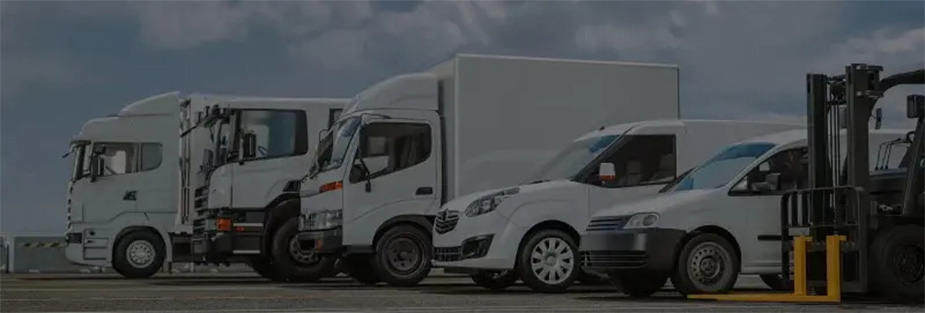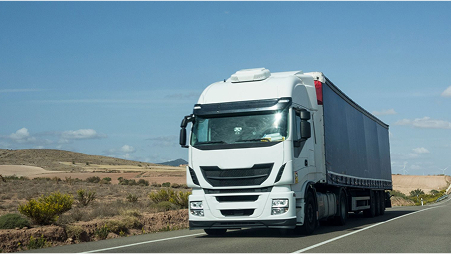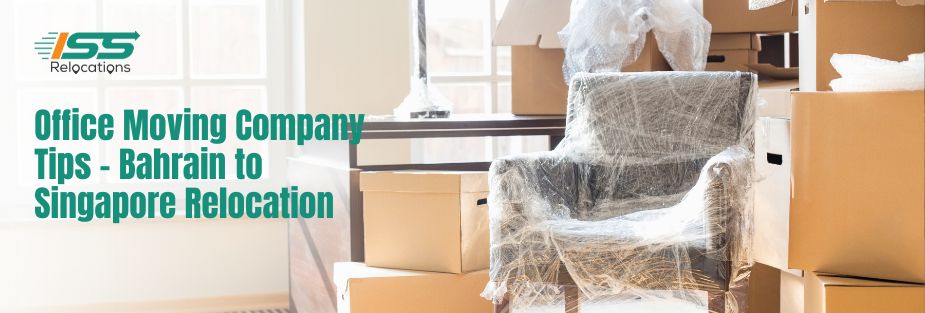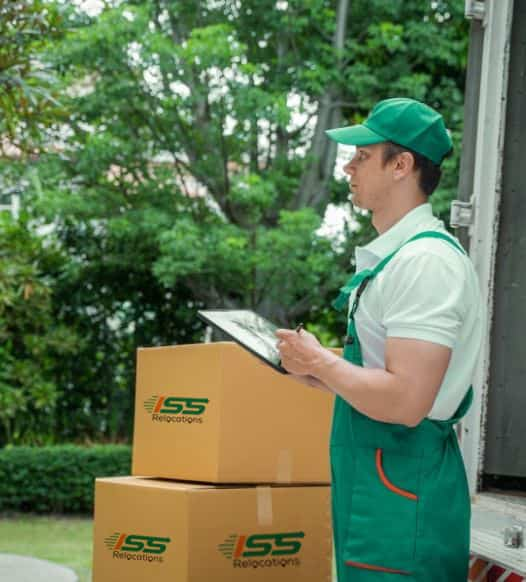
Different Types of Transit Insurance for Moving Companies
Moving to a new home can be both an exciting and stressful experience. While the excitement of starting fresh in a new space is palpable, the logistics of packing, transporting, and unpacking all your belongings can be a nightmare. Additionally, the fear of damage or loss of your valued possessions during transit is always a concern. This is where transit insurance comes in. Transit insurance for moving companies provides coverage for your belongings during the move. This article provides an in-depth understanding of the different types of transit insurance available; their coverage limits and exclusions, and how to choose the right insurance for your move.
Transit insurance is designed to protect your belongings against damage or loss during transportation. It is an important consideration for both customers and moving companies. For customers, transit insurance provides peace of mind knowing that their belongings are covered in the event of loss or damage. For moving companies, transit insurance reduces their liability and provides protection in case of any claims made by customers.
There are several types of transit insurance available, including carrier liability insurance, released value protection, full value protection, and specialized transit insurance. Let us take a closer look at each of these types.
Carrier Liability Insurance
Carrier liability insurance is the most basic type of transit insurance provided by moving companies. This type of insurance is included in the cost of the move and provides limited coverage for damages or loss that may occur during the transit.
Carrier liability insurance provides coverage based on the weight of the shipment, rather than the value of the items. The coverage provided by carrier liability insurance is subject to certain exclusions. These exclusions may include damages caused by natural disasters, acts of God, and inherent vice. Inherent vice refers to the natural deterioration of goods over time, such as rust or decay.
Pros and cons of carrier liability insurance
The primary advantage of carrier liability insurance is that it is included in the cost of the move, which makes it affordable. However, the coverage provided by carrier liability insurance is limited, and in case of damage, you may only be reimbursed a minimal amount. Therefore, if you have valuable or delicate items, you may need to consider additional insurance options.
Requirements for carriers to provide this insurance
Carriers are required by law to provide carrier liability insurance for every move. The coverage provided by carrier liability insurance is subject to the regulations set forth by the government.
Released Value Protection
Released value protection is another type of transit insurance provided by moving companies. This type of insurance is an upgrade from carrier liability insurance and provides coverage based on the value of the items being moved.
Released value protection is also subject to certain exclusions, which may include damages caused by natural disasters, acts of God, and inherent vice.
Coverage limits and exclusions
The coverage provided by released value protection is usually based on the value of the items being moved. The coverage provided by released value protection is subject to certain exclusions, which may include damages caused by natural disasters, acts of God, and inherent vice.
Pros and cons of released value protection
The primary advantage of released value protection is that it provides coverage based on the value of the items being moved. However, the coverage provided by released value protection is still limited, and in case of damage, you may only be reimbursed a minimal amount.
Requirements for carriers to offer this protection
Carriers are not required by law to provide released value protection, but they are required to offer it as an option to their customers. The carrier must provide the customer with the option of selecting released value protection or full value protection, and the customer must acknowledge their selection in writing.
It is important to note that the customer must specifically request released value protection in writing, otherwise, the carrier will assume that the customer has selected full value protection. Additionally, the carrier is not responsible for any damages that exceed the coverage limit of the selected protection option. It is important for customers to understand that this coverage limit may not be sufficient to cover the full value of their belongings in the event of damage or loss.
Full Value Protection
Explanation of full value protection
Full value protection is a comprehensive insurance option that provides the customer with the highest level of coverage. Under this option, the carrier is responsible for the replacement value or repair cost of any items that are damaged, lost or stolen during the transit. The carrier may choose to repair the damaged item, replace it with a new one, or offer a cash settlement for the cost of repair or replacement.
Coverage limits and exclusions
Full value protection typically has a higher coverage limit than released value protection. The coverage limit for full value protection is based on the declared value of the shipment, which is the maximum amount that the carrier will pay in the event of a claim. The carrier may set a minimum declared value requirement, and the customer will be responsible for paying a premium based on the declared value of the shipment.
However, there are some exclusions to full value protection, including damages caused by natural disasters or acts of God, and items that are not packed by the carrier. Additionally, the carrier may choose to exclude certain high-value items, such as jewellery or artwork, from full value protection coverage.
Pros and cons of full value protection
The main advantage of full value protection is that it provides the highest level of coverage, giving customers peace of mind knowing that their belongings are fully protected during the move. If any item is damaged, lost, or stolen during transit, the carrier is responsible for repairing or replacing the item up to the declared value.
However, full value protection can be more expensive than released value protection, and the customer may be required to pay a premium based on the declared value of their shipment. Additionally, the carrier may exclude certain high-value items from full value protection coverage, leaving the customer responsible for insuring those items separately.
Requirements for carriers to offer this protection
Similar to released value protection, carriers are required to offer full value protection as an option to their customers, but it is not required by law. The carrier must provide the customer with the option of selecting full value protection or released value protection, and the customer must acknowledge their selection in writing.
How to calculate full value protection coverage
To calculate the coverage, limit for full value protection, the customer must declare the total value of their shipment in writing. The carrier may set a minimum declared value requirement, and the customer will be responsible for paying a premium based on the declared value of the shipment. It is important for customers to accurately declare the value of their shipment to ensure they have sufficient coverage in the event of damage or loss.
Optional deductible options
Full value protection may also offer an optional deductible option, which can help lower the cost of the premium. The deductible is the amount that the customer agrees to pay out of pocket in the event of a claim, and the carrier will be responsible for paying the remaining amount up to the declared value of the shipment.
Specialized Transit Insurance
Explanation of specialized transit insurance
Specialized transit insurance is designed to protect valuable and unique items during transportation. Moving companies often offer specialized insurance coverage for a range of items, including antique furniture, fine art, electronics, and other high-value or fragile items. This type of coverage is essential for people who own rare or expensive belongings that require special handling.
Types of specialized transit insurance available
There are various types of specialized transit insurance available for different types of belongings. Here are some examples of the types of specialized transit insurance that may be available:
1. Antique insurance: This type of insurance covers valuable antiques and other rare items. Antique insurance is often necessary because standard transit insurance may not cover the full value of these items.
2. Fine art insurance: Fine art insurance covers the transportation of artwork, sculptures, and other types of fine art. This insurance is essential for art collectors and galleries that need to transport valuable artwork safely.
3. Electronics insurance: Electronics insurance covers the transportation of electronic devices such as televisions, computers, and audio equipment. This type of insurance is crucial for people who are moving delicate electronic equipment.
Coverage limits and exclusions
Like other types of transit insurance, specialized transit insurance policies have coverage limits and exclusions. The coverage limits may vary depending on the type of item being transported, and the policy’s terms and conditions. For instance, some policies may only cover a specific amount of the item’s value, while others may provide coverage for the full value of the item.
As with other types of insurance, specialized transit insurance policies may also include exclusions that limit coverage for specific situations. These exclusions may vary depending on the policy, but they may include:
1. Coverage limits for items that are improperly packed or crated.
2. Exclusions for damages that occur during loading or unloading.
3. Exclusions for damages caused by natural disasters, such as floods or earthquakes.
Pros and cons of specialized transit insurance
Specialized transit insurance has both pros and cons. Here are some of the advantages and disadvantages of this type of insurance:
Pros:
1. Specialized transit insurance provides comprehensive coverage for high-value and unique items.
2. This type of insurance provides peace of mind for people who are transporting valuable or fragile items.
3. The policies are often customizable, so you can choose the coverage that fits your specific needs.
Cons:
1. Specialized transit insurance can be expensive compared to other types of transit insurance.
2. Coverage limits and exclusions may vary depending on the policy, which can make it challenging to compare different options.
3. Some policies may have complex terms and conditions, making it difficult to understand what is covered.
Requirements for carriers to provide this insurance
Moving companies are not required by law to provide specialized transit insurance. However, many companies offer this type of insurance as an additional service to their customers. If you have valuable or unique items that require specialized insurance coverage, you should ask your moving company if they offer this service.
How to Choose the Right Transit Insurance
Choosing the right transit insurance for your move is an essential step in protecting your belongings during transportation. Here are some factors to consider when selecting transit insurance:
1. Assess the value of your belongings: Before selecting transit insurance, you need to assess the value of your belongings accurately. Make a list of all the items you plan to transport, including their estimated value.
2. Compare insurance options: There are various types of transit insurance available, and each type has its pros and cons. Take the time to compare different options and choose the one that best fits your needs and budget.
3. Consider the level of protection you need: The level of protection you need depends on the value and fragility of your belongings. For high-value or fragile items, you may need to purchase additional insurance coverage.
4. Check the carrier’s insurance coverage: If you are hiring a moving company, check if they offer carrier liability insurance or released value protection. You should also inquire about the coverage limits and exclusions of the insurance.
5. Check your homeowner’s insurance policy: Your homeowner’s insurance policy may provide some coverage during transportation. Check with your insurance provider to see if they offer any coverage and the extent of the coverage.
6. Understand the deductibles: Transit insurance policies may have deductibles, which means that you will have to pay a certain amount of money out of your pocket before the insurance coverage kicks in. Understand the deductible options and choose the one that works best for you.
7. Work with your moving company: Your moving company can provide valuable guidance on selecting the right transit insurance. They can help you understand the different insurance options available and the coverage limits and exclusions. They may also provide recommendations based on their experience with previous customers.
Once you have selected the right transit insurance, make sure to review the insurance policy carefully and understand the terms and conditions. Keep a copy of the insurance policy handy during the move and make sure that your moving company has a copy as well.
Conclusion
In conclusion, selecting the right transit insurance is a crucial step in protecting your belongings during transportation. There are various types of transit insurance available, and each type has its pros and cons. Carrier liability insurance and released value protection are the most common types of transit insurance offered by moving companies, but they may not provide sufficient coverage for high-value or fragile items. Full value protection and specialized transit insurance offer additional coverage options but may come at a higher cost.
When selecting transit insurance, it is essential to assess the value of your belongings, compare insurance options, consider the level of protection you need, check your homeowner’s insurance policy, understand the deductibles, and work with your moving company. By following these steps, you can choose the right transit insurance and have peace of mind during your move. At ISS Relocations, we understand the importance of transit insurance and offer comprehensive insurance options to our customers. Our zero-damage policy ensures that your belongings are transported safely and securely to your new destination. Contact us today to learn more about our relocation services and transit insurance options.
Plan Stress-free Move with Top Moving Company in UAE - ISS Relocations

Frequently Asked Questions
What is transit insurance?
Transit insurance provides coverage for goods while they are being transported from one location to another. It protects against risks such as damage, theft, or loss during transit. ISS Relocations offers reliable transit insurance options, ensuring that your belongings are securely covered throughout their journey, whether domestically or internationally.
What is good transit insurance?
Good transit insurance provides comprehensive coverage for a wide range of potential risks, including theft, damage, or natural disasters during transportation. It should be tailored to your specific needs, offering peace of mind while your items are in transit. ISS Relocations ensures you have the best coverage to protect your goods and minimize any potential losses during shipping.
How many types of insurance are there?
There are several types of insurance, including health, life, car, home, and transit insurance. For transit, common types include all-risk coverage, named-peril insurance, and specific liability coverage. ISS Relocations offers various types of transit insurance to suit your shipping needs, ensuring that your goods are well-protected, no matter the destination.
Who needs transit insurance?
Anyone shipping goods, whether for personal or business purposes, needs transit insurance to protect against potential risks during transport. This includes individuals moving household items, businesses shipping products, and even pet owners. ISS Relocations offers tailored transit insurance solutions, giving you the protection you need for a smooth and secure move.
Why is goods in transit insurance important?
Goods in transit insurance is important because it provides protection against potential risks like theft, damage, or loss while your items are being transported. Without it, you could be left financially responsible for any damage or loss. ISS Relocations offers comprehensive goods in transit insurance to ensure your belongings are protected throughout their journey.
Why is it important to have different types of insurance?
Different types of insurance cater to various risks and circumstances, providing comprehensive protection across all aspects of your move. For example, transit insurance protects your goods during shipping, while home or health insurance covers other aspects of your relocation. ISS Relocations offers various insurance options, ensuring that all your needs are met, offering peace of mind throughout your move.
What is the purpose of cargo insurance?
Cargo insurance protects goods during transportation, covering risks such as theft, damage, or loss. It ensures that businesses and individuals shipping valuable items are financially protected against unforeseen circumstances. ISS Relocations offers cargo insurance, providing comprehensive coverage for your goods, ensuring they arrive safely at their destination with minimal risk.
Moving Company - Recent Blog
Stay informed and prepared for your next move with our latest blogs on moving services in the UAE. From expert packing tips to international relocation guides, ISS Relocations brings you up-to-date insights to make your moving experience smoother, safer, and stress-free.










